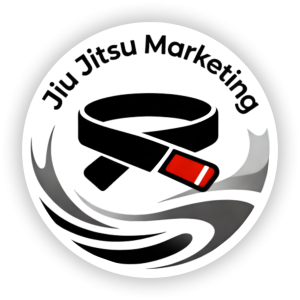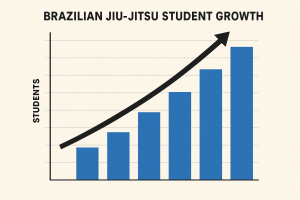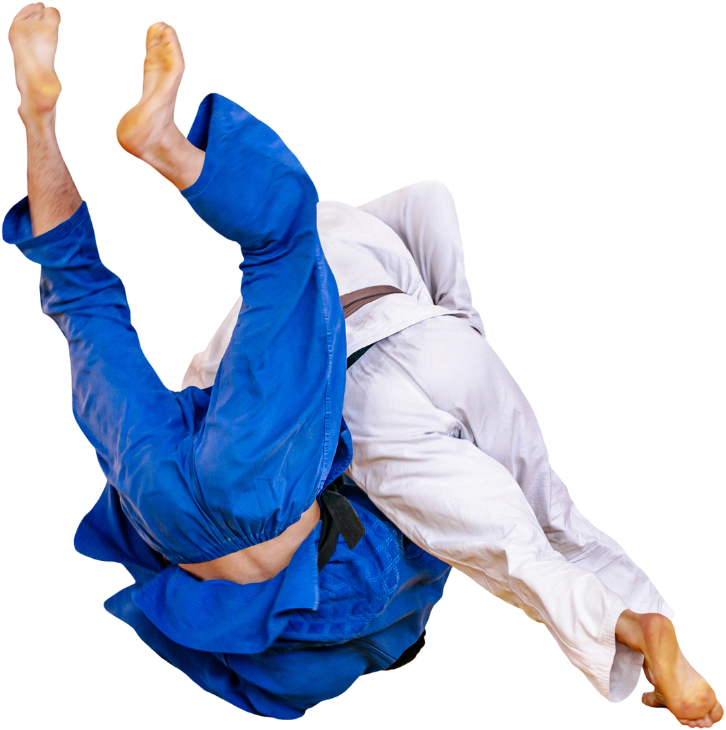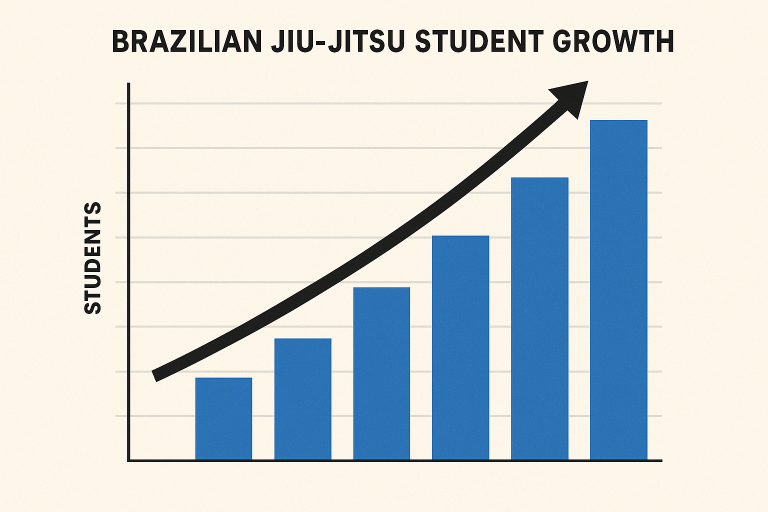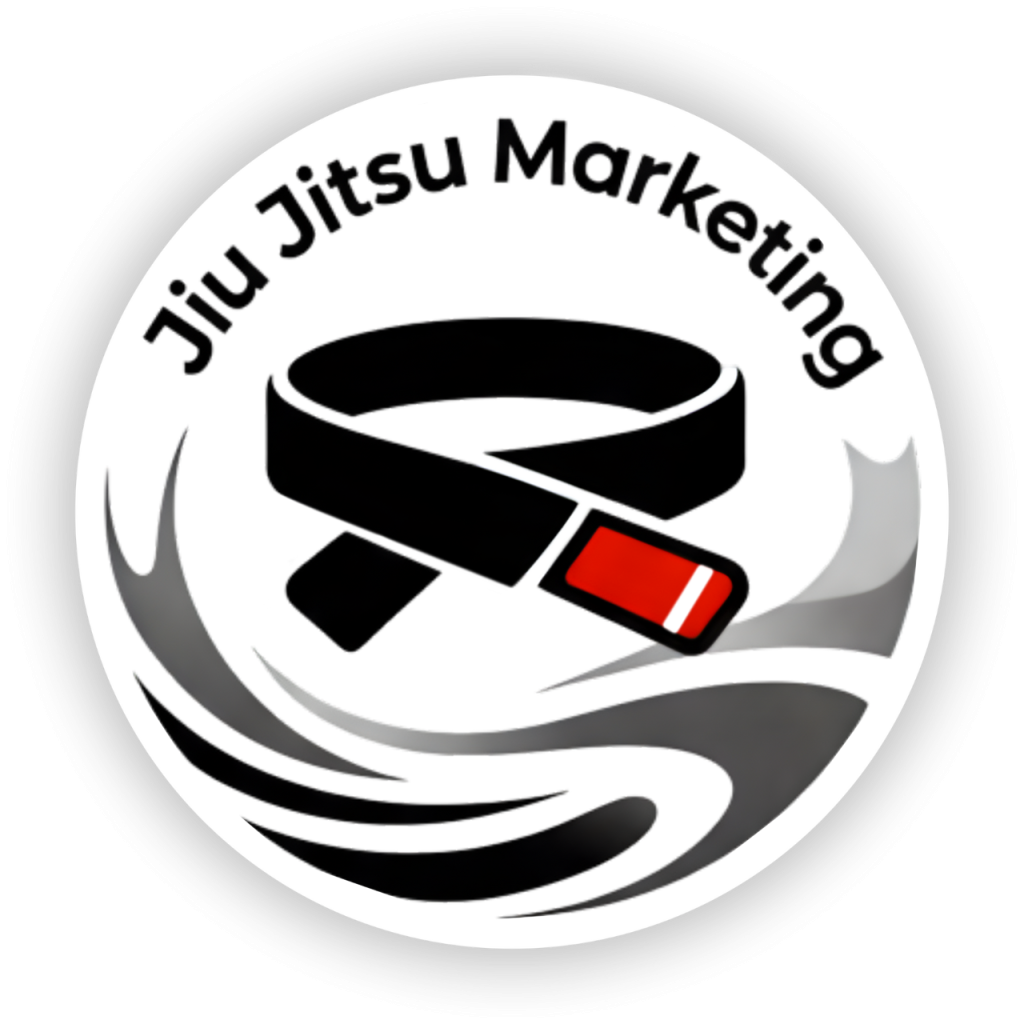Complete Guide to Jiu Jitsu Marketing for Academy Growth
The Rapid Growth of Brazilian Jiu-Jitsu
The Brazilian jiu-jitsu community is experiencing unprecedented growth. Current estimates suggest between three and six million people worldwide are actively practicing the art. The International Brazilian Jiu-Jitsu Federation data illustrates this explosive expansion: from just 314 registered academies in 2012 to 1,324 in 2019, and an impressive 7,517 academies by 2025. Google Trends data confirms this upward trajectory, showing consistently increasing search interest for BJJ-related terms.
This growth presents both opportunities and challenges for academy owners. While demand for quality instruction continues to rise, increased competition means more schools are opening in every market. The implication is clear: effective marketing becomes more critical with each passing year. However, there’s an important caveat—better marketing amplifies everything about your gym, including its weaknesses. If your academy isn’t delivering a quality experience, increased visibility will only accelerate your problems.
Preparing Your Academy Before Marketing
Before launching any marketing initiatives, you must ensure your gym is genuinely ready to receive and serve new students. Understanding why students leave is essential to creating an environment that retains them. Research identifies several common reasons for student attrition: negative experiences at the gym, feeling unwelcome or excluded from the community, frustration with their progress, life circumstances like career changes or family obligations, recurring injuries, physical recovery challenges, and time constraints.
Each of these retention issues requires a thoughtful solution before you invest in bringing new students through your doors. Your marketing efforts will be wasted if you’re constantly replacing students who leave due to preventable problems.
Understanding Your Target Audience
Not every potential student represents a profitable opportunity for your academy. Successful marketing begins with crystal-clear identification of your ideal students. You’re looking for two essential qualities: students who are willing to invest in training and students who have the financial means to do so consistently.
High-Value Customer Segments
Research and industry data point to several particularly profitable demographic groups. Boys between seven and twelve years old represent a strong market segment, as do employed men aged 25 to 34. Families with children in the seven to twelve age range offer excellent opportunities, particularly when the entire family trains together. Additionally, individuals specifically seeking self-defense training tend to be committed, focused students.
Current statistics show that men comprise the majority of new BJJ students, though this is gradually evolving. While women have historically gravitated toward other martial arts like taekwondo or karate, standout female athletes are helping to change perceptions and attract more women to jiu-jitsu.
Segmenting Your Student Base
Beyond demographic targeting, it’s valuable to categorize your existing students into behavioral groups. Beginners require substantial attention, guidance, and social integration into your gym culture. Competitors are goal-driven students hungry for knowledge and rapid improvement, which can create pressure if you’re unprepared to meet their high expectations. Family groups offer profitability but come with elevated expectations and greater responsibility, requiring you to balance appropriate discipline and coaching for both children and parents.
When you clearly define your target audience, creating resonant marketing messages becomes straightforward. This targeting phase is make-or-break for your campaign success—the majority of your long-term results depend on getting this step right.
Building a Strong Jiu Jitsu Brand
Branding experts emphasizes that brands are widely misunderstood. Your brand isn’t your logo, your promotional promises, your visual identity system, or even your services. Instead, your brand is the gut feeling people have about your academy. It’s your reputation, existing in the minds and hearts of your community.
If you want your gym recognized for creating champions, you need a curriculum and coaching approach that consistently produces competitive success. If you’re positioning around a premier children’s program, you must deliver outcomes that parents value and appreciate. For academies promoting an injury-free training environment, you need documented safety protocols and a culture that prioritizes longevity.
Tangible and Intangible Brand Elements
Your brand functions as a presentation vehicle—a communication tool potential students use to evaluate whether to train with you. This presentation combines intangible factors like appeal, reputation, exclusivity, credibility, and culture with tangible elements including design quality, color schemes, typography, testimonials, reviews, and content.
The critical requirement is alignment between these tangible and intangible elements. When they match, potential students feel comfortable and confident. When there’s a mismatch—for instance, claiming to have a black belt instructor but presenting an amateurish facility—you create immediate distrust.
Brand inconsistencies have direct consequences for your marketing performance, including poor click-through rates, low conversion rates, disappointing return on ad spend, weak local search rankings, insufficient organic traffic, and high bounce rates from your website.
Marketing Strategy One: Website Optimization
Your website must answer three fundamental questions for every visitor: Where am I? What can I do here? Why should I do it? Each page should be clear, appealing, and purpose-driven.
At minimum, your BJJ academy website should include these essential pages: Home, Classes, Schedule, About, and Contact. If you’re listing contact information, ensure your name, address, and phone number remain consistent across your website, social media profiles, and review platforms.
Essential Website Components
A strong value proposition is non-negotiable. This statement answers the crucial “why” question—why should students choose your academy? An effective value proposition meets four criteria: students want what you’re offering, your offer is unique to your gym, the message is clear, and it’s credible.
An irresistible offer creates the motivation for prospects to take action. These offers take many forms: guarantees, extended free trials, special promotions, incentives, or performance guarantees. The right offer generates trust and gives potential students the confidence to take a risk on your academy.
Urgency triggers motivate immediate action. Unlike artificial scarcity, which repels students, genuine urgency is rooted in transparency and follow-through. It encourages prospects to make prompt decisions without feeling manipulated.
Outstanding presentation matters tremendously. Potential students will judge your academy based on what they can see—your facility quality, student testimonials, competition results, and visual presentation. These visible elements tell them about invisible qualities like your values, character, and trustworthiness.
Your website serves as the hub of all your marketing efforts. Your advertisements, social media posts, reviews, and local listings all drive traffic back to this central platform. If you want to generate leads consistently, your website must be the cornerstone of your marketing infrastructure.
Marketing Strategy Two: Local Search Optimization
When potential students search for a BJJ gym, Google determines rankings based on three specific criteria. Relevance measures how well your Google Business Profile matches what searchers want. Distance calculates how far your gym is from the location term used in searches. Prominence reflects how well-known your academy is—Google prioritizes established brands in local search results.
Critical Ranking Factors
To improve visibility in Google’s local search listings, focus on maintaining a consistently updated Google Business Profile, ensuring your name, address, and phone number are identical across all platforms, building a strong portfolio of online reviews, and optimizing organic search engine optimization factors including on-page elements, backlinks, social signals, and behavioral metrics.
Consistency is paramount. Optimize your website’s on-page SEO elements using established best practices. Complete every section of your Google Business Profile thoroughly—claim your listing, add relevant categories and attributes, write compelling descriptions, create regular posts, add photos weekly, respond to reviews, list your services, and enable messaging.
Build a robust review portfolio by making it standard practice to request reviews from all students. Focus on major platforms including Google, Apple Business Connect, Facebook, Yelp, and Bing Maps.
Invest effort in SEO factors including building internal and external links, content syndication, citation management, social media marketing, listing management, public relations, and brand mentions. These strategies require consistent effort rather than technical expertise.
Marketing Strategy Three: Content Marketing and Development
Most BJJ academies either neglect content marketing entirely or focus narrowly on technique breakdowns. This approach misses the opportunity to create content that attracts potential students. A more effective strategy involves content engineering—reverse-engineering what Google wants to see while creating genuinely valuable content for your audience.
Essential Content Questions
Start by identifying your audience—not just paying students, but everyone who consumes your content, including industry experts, competing gyms, casual observers, and fans. Determine what specific value different audience segments want from you. Clearly define who your ideal customers are: students who are both willing and able to pay for training consistently.
Understand what your students specifically want—whether that’s status and prestige, self-defense skills, professional fighting aspirations, or something else entirely. Determine how different groups prefer to receive content. Men might prefer YouTube while women engage more on Instagram or Pinterest. Finally, identify the behavioral drivers of each group, including their desires, goals, fears, frustrations, problems, cultural values, and communication norms.
Content That Solves Problems
Your content should address genuine student concerns and questions: how to choose the right gym, what’s needed for effective self-defense, how jiu-jitsu can help people past their physical prime, why BJJ is essential for self-defense, and how to build self-defense skills efficiently.
Organize your content into three strategic categories. Top of Funnel content approaches problems from a high-level perspective, appealing to a broad audience to build awareness and establish your brand. Middle of Funnel content provides specificity, delving deeper into particular problems to generate leads and help prospects evaluate your offering. Bottom of Funnel content focuses exclusively on facilitating conversions through free trials, instructional content, special incentives, discounts, and promotional offers.
Content Creation and Distribution
For effective content creation, ,create several long-form pillar pieces—comprehensive videos, podcasts, or detailed instructional content. Extract short-form content from these pillars—articles, slide presentations, video clips, shorts, and reels. Then distribute unique versions of this content across different social media platforms.
An important distribution strategy: avoid posting identical content across multiple platforms. When you share the same clip on YouTube, Instagram, and Twitter, followers have no incentive to connect with you on multiple platforms. Platform-specific content gives your audience compelling reasons to follow you everywhere.
Marketing Strategy Four: Community Engagement and Local Outreach
Your local community and nearby businesses have no inherent reason to care about your BJJ academy. To generate goodwill and support, you must create substantial value for them. Following Peter Thiel’s value formula provides a framework: create specific value for local businesses and community members, then capture a percentage of that value through increased awareness and reputation.
Four Community Engagement Strategies
First, teach what you know. Education attracts attention while information converts prospects into students. Approach relevant local businesses that have audiences but aren’t effectively serving them with valuable knowledge. Offer punch block training for bar patrons, grappling tactics for women in public spaces, situational awareness training for various venues, or low-risk takedowns for at-risk populations.
Second, give what you have. If time is limited, provide local businesses with something valuable they want or need. Sponsor local events, make in-kind donations, offer class giveaways or extended trial memberships, or provide exclusive offers to specific community organizations such as veterans or domestic abuse survivors.
Third, protect from harm. Certain groups face regular danger—law enforcement, firefighters, EMTs, teachers, and domestic violence victims. Offer specialized training: pin and restraint techniques for healthcare professionals, free or discounted training for crime victims, instruction in recognizing danger signals, or collaboration with complementary organizations to spot and avoid threats.
Fourth, be a connector. Skilled networkers create connections between people and organizations, bringing together those who can provide mutual value. Introduce organizations that can benefit each other, bring influencers together, seed relationships with valuable ideas, host networking events with influential attendees, and nurture the connections you facilitate. This long-term strategy requires patience but delivers significant rewards.
Marketing Strategy Five: Paid Advertising and Promotions
The biggest mistake gym owners make with paid advertising is shotgun marketing—indiscriminately throwing money at advertising platforms without strategy. The platform isn’t the problem; the approach is. Common errors include targeting people outside your service area, focusing on irrelevant keywords or interests, treating all website visitors identically, sending prospects to your homepage, neglecting website quality, and ignoring other marketing channels. Knowing what to do and what not to do, takes years of experience in this niche.
Traffic Segmentation Strategy
Effective paid advertising requires sorting potential students into three categories. Cold traffic consists of people hearing about your gym for the first time—they’ve used relevant keywords or shown some interest but don’t know you. Warm traffic includes people familiar with your gym who have engaged with your content somehow—they’ve watched technique videos, listened to your podcast, or subscribed to your newsletter. Hot traffic represents repeat visitors actively considering your gym who have demonstrated strong purchase intent.
Appropriate Offers for Each Traffic Type
For cold traffic, lead with value. Use low-risk, high-reward offers requiring minimal commitment to build trust and capture leads—free instructionals, technique breakdowns, free seminars, or workshops that solve specific problems.
With warm traffic, introduce opt-in offers where prospects exchange contact information for high-value content addressing their concerns—guidance on choosing the right gym, bully-proofing tactics for children, or self-defense strategies for women.
For hot traffic, present direct product offers. These prospects have self-identified their interest and readiness to purchase. Promote free trials, membership offers, merchandise, and bonus incentives to close the sale.
Implementing Your Jiu Jitsu Marketing Plan
The demand for Brazilian jiu-jitsu training will continue its upward trajectory. As more academies open, competition for students intensifies, making consistent, strategic marketing increasingly essential for growth and sustainability.
While better marketing generally attracts more students, it’s equally true that effective marketing will expose poorly-run academies. Before investing in marketing, verify that your gym is genuinely prepared to receive, serve, and retain new students. With a clear plan and consistent execution across these five marketing strategies, your academy can attract, convert, and retain dedicated students—no dramatic robbery incidents required.
